寺内 曜子 TERAUCHI Yoko
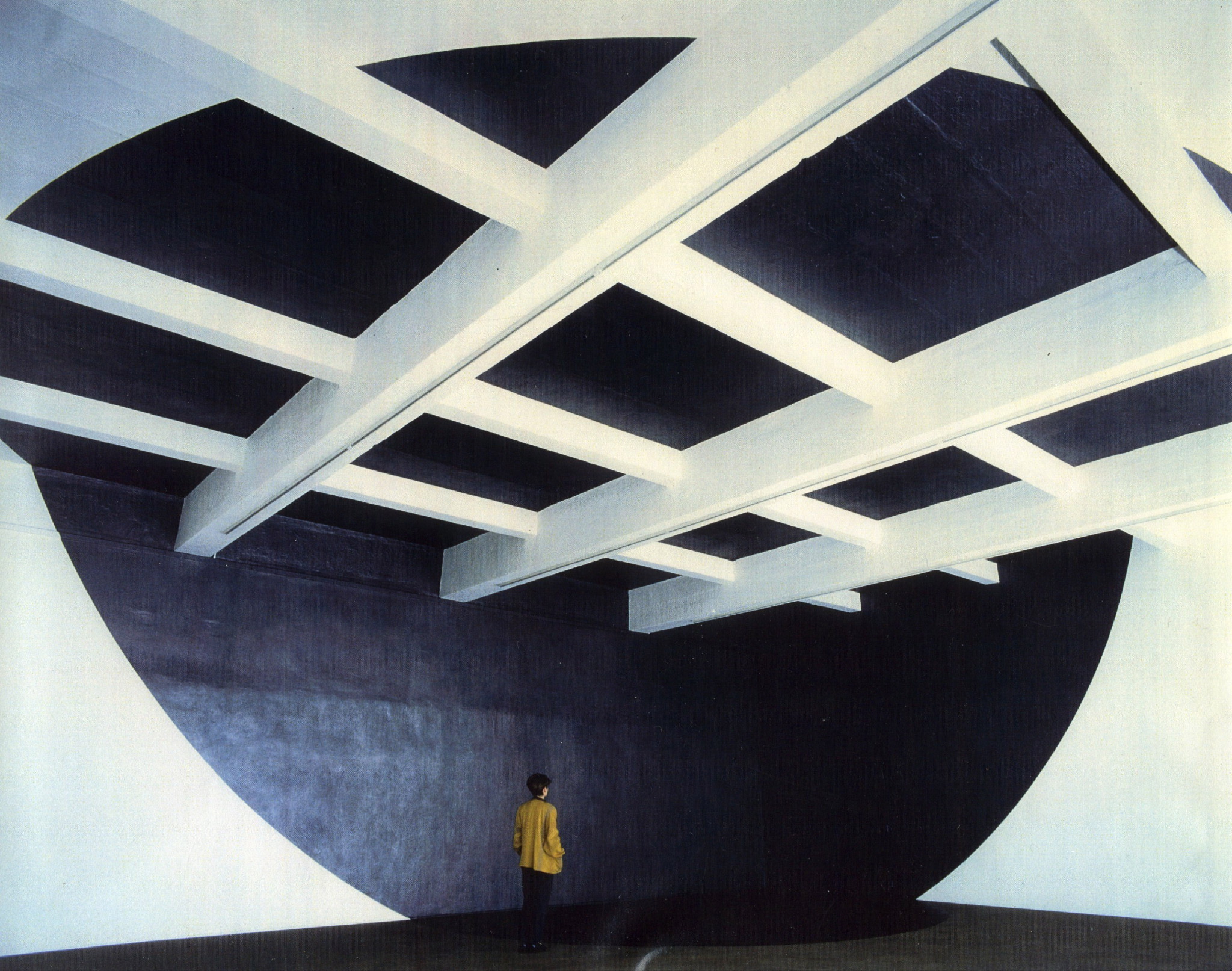
1.《空中楼閣》 1994年 場所限定インスタレーション(チゼンヘール・ギャラリー、ロンドン)、建物自体と黒鉛、計測不能(見ることができるのは室外を含む不可視の全体の1部分のみ) 撮影:ヒューゴ―・グレンディニング
Air Castle 1994, Site specific installation at Chisenhale Gallery, London , The site itself and Graphite, Unmeasurable (what you can see is only α part of unseen whole) photo by : Hugo GLENDINNING
寺内曜子
TERAUCHI Yoko
1954年、東京⽣まれ。1979-98年、ロンドン在住、活動。1999年以後、東京在住、活動。
アーティスト・ステートメント
寺内曜子
「理解を超える」という概念が許される(東洋の)文化的バックグラウンドを持つ私にとって、西洋哲学の基本をなす、「世界は論理的に首尾一貫した体系である」という世界観、そしてそれに伴う「普遍的真実の追求」という目的は、受け入れる事が出来ません。
私は作品を通して、私達が習慣としている理性的理解(「判る」)という、世界を本質(特定の意味)に分解していく二元論的方法が、実はありのままの世界の姿を歪め、対立という概念に導く、そもそもの原因である事を指摘したいと思います。
私は観客の意識を、対象物を見ている自分の心の反応と、立っている位置に向ける手段として ”インスタレーション”を使います。ですので、「作者の世界観を具体的に表現した物の展示」という西洋美術の伝統的方法を使う事は出来ません。その代わり、私は観客の心理的そして身体的体験を混乱させる ”状況”を作品として発表します。
私は画廊の内と外を一続きの限り無い空間とする為に画廊を世界から遮断された独立した空間としている枠組みを壊します。ですので、画廊に入る以前の無意識な(空間)移動が重要な体験となる事もあります。
画廊の内と外が一続きの空間と気付くことにより、自分の位置が今体面している物に対して、どういう関係にあるのか分からなくなります。
(自分の位置が分からなければ)客観、主観、どちらの判断基準もよりどころがありません。
ここからが世界の別な見方の始まりです。
カタログ Yoko Terauchi, Chisenhale Gallery, London & The Fruitmarket Gallery, Edinburgh, 1996に掲載された作家の英文ステートメントを作家自身が和訳。 英文テクストは以下の書籍に再掲された。Words and Things. celebrating fifty years of writing on art, published by Fruitmarket, 2024.
寺内曜子—地図を持たぬ旅人
渡部 葉子(慶應義塾大学アートセンター教授、キュレーター)
2017年に生まれた新しい作品について語ることから始めなければならないだろう(《パンゲア》)。
1枚の紙と小さな球体、それは何を表しているのか。まず、作品を注意深く見てみよう。壁に貼られた正方形の紙には細い黒い縁取りが見える。よくよく観察してみると、黒い色は紙の小口、即ち側面に塗られているのである。どんなに薄いとしても紙には厚さがあり、側面がある、その側面部分に着目したのだ。そして、手前に配された球体。球体には不規則に黒い線が走っている。更に観察すれば、球体は紙が丸められ、その側面に施された線が球体の表面を走る不規則な線を生み出していることが了解される。紙は滑らかな球体にまで凝縮され、側面の線、即ち紙の領域を示す線は球体の表面では長く、短く寸断され、気まぐれな形をとっている。しかし、それは、実は繋がった1本の線であり、球体の内部深くにも入り込んでいるのである。当然、紙の表裏など見分けようもなく、無化されている。
一見、唐突に見えるこの作品にはこれまでの寺内曜子の道行きとその根本姿勢がしっかり詰まっている。まず、紙一枚という素材を使用し、そこに手を加えるとしても、その紙の性質に逆らうことなく、紙一枚であることを解体しない。寺内の作品は素材に決して無理強いはしない。それでいて、普段は見えていないものを見せてくれる。更に、ここで紙の表裏が解消されてしまっていることを忘れてはならない。表裏、内外など、当たり前と見なされている対立項の解消、それを支える二元論への挑戦は寺内の一貫したモチベーションである。最後に本当はひと繋がりの線が分断された形でしか球面に現れないことに着目しておこう。我々はひと繋がりの線の部分を見ている。
「部分しか見えない」—等価物 equivalent としての拡大と凝縮
「部分しか見えない」という点から出発しよう。この問題は寺内が1991年から制作しているサイト・スペシフィックな作品「空中楼閣」へと我々を導くだろう。1991年に東京の画廊かんらん舎で最初に展示されたこのシリーズは、展示空間をより大きな空間へと拡大解体する作品で、我々が通常、認識している空間というものが全体を把握できていない部分に過ぎないことを視覚化しようとしたものである。 (以下のテクスト省略)
スタンディング・ポイントⅠ「寺内曜子」展図録より、慶応義塾大学アートセンター、2017年
TERAUCHI Yoko
Born in Tokyo in 1954. Lives and works in London in 1979-1998 and in Tokyo from 1999.
Artist Statement
TERAUCHI Yoko
Having a cultural background which is open to the unknown, I cannot accept the western philosophical view of the world as a logical coherent system and the concomitant aim to search for universal truth.
My works are intended to point out the actual source of this dualism, the habit of articulating the world into essences, making the viewer realise how this rational understanding distorts what actually exists, leading to the concept of conflict.
I use installation as a means to focus the viewer’s attention on their own mind and position in space. Thus I abandon the western artistic tradition of representing ideas by physical demonstration.
Instead what I present are conditions, or situations, which dislocate the viewer’s psychological and physical experience in trying to understand what they see.
I break the framework of the gallery space (and its independence) to involve outer space as a continuous infinity. Thus unconscious physical changes of position prior to entering the gallery space might become a very important experience, leading the viewer to realise that they cannot distinguish where they are in relation to what they are confronting. This exemplifies the total loss of a basis to evaluate both subjective and objective points of view.
It is an entrance to a different approach to the world.
The text is an artist’s statement by Yoko Terauchi whose exhibition Air Castle was first held at the Chisenhale Gallery in London before travelling to Fruitmarket Gallery in 1996.
The text was republished in the following book: Words and Things. celebrating fifty years of writing on art, published by Fruitmarket, 2024.
Yoko Terauchi—On a Mapless Journey
WATANABE Yohko(Keio University Art Centre,
Professor and Curator)
I would like to begin this account with an example from Terauchi’s recent work, created in 2017 (see Pangea).
What could a single sheet of paper and a tiny ball be signifying here? Let’s begin by looking closely at the work. We might notice, first, that the square sheet of paper on the wall is bordered by a fine black line. Looking even closer, we can see the black line is actually painted along the edge or side of the paper. However thin the sheet of paper, it still has a certain thickness, or a side, and this side-region is what Terauchi is paying attention to. So, let’s turn to the ball placed in front of the paper. Irregular black lines run across its surface. Paying closer attention, it becomes apparent that the ball is made of scrunched-up paper, and that the irregular lines running across its surface are produced by the black-coloured edge of the paper. The paper is so compressed that the ball’s surface looks smooth. The edge lines—or lines that show the area of the paper—are made short or long into random shapes across its surface. But this is, in fact, a single continuous line that runs deep inside the ball. There is no distinction, of course, between the front and back of the paper—such distinctions are nullified.
Looking at this work at a glance, one can see captured within it the fundamental approach and trajectory of Yoko Terauchi’s work. What we see here, is a single sheet of paper used as material. Even when a process is applied to it, its intrinsic qualities are never resisted, and its integrity as a single sheet is never compromised. Terauchi’s works never coerce the materials they use. But they do reveal things that are not usually looked at. In this regard, we might think about the way the front and back of the paper become indistinguishable. This challenging of two-dimensional form, which effaces the naturalized dichotomies of front and back, inside and outside, is the consistent motivation behind Terauchi’s work. In the end, the sphere appears as nothing more than a shape divided up by interconnecting lines. Because what we are looking at is only part of what is, in fact, a continuous line.
“Seeing in parts only”: The Idea of an Equivalence Between Expansion and Contraction
I want to begin considering this matter of “seeing in parts only.” Terauchi has been moving towards these concerns since she began her site-specific installation “Air Castle” in 1991. This series, first exhibited at Kanransha gallery in Tokyo in 1991, presented works that expanded beyond the size of the exhibition space. These works made visible a space that cannot usually be grasped—that exceeds what we are usually aware of. (omitting the following text)
Translated by Rosa van HENSBERGEN
Extract from the Catalogue of Standing Point I Yoko Terauchi, Keio University Art Center, 2017
寺内曜子についての新しい情報は、作家のSNSや以下のサイト、CVをご覧ください。
Please refer to the following social media pages and websites and CV for new updates.
facebook
CV(Jp), CV(En)
websites about her
国立アートリサーチセンター/ アーティスト・トーク#5 寺内曜子/動画23分
NCAR:National Center for Art Research / Artist Talk #5 Terauchi Yoko/ Video 23mins
Galerie Hoffmann website Yoko Terauchi in focus Ebb & Flow(1991年開催の個展の展示作品・製作中の画像とテキスト)
「寺内曜子講演会」豊田市美術館 、2021年9月12日
https://www.youtube.com/watch?v=aoCLry_rKg8
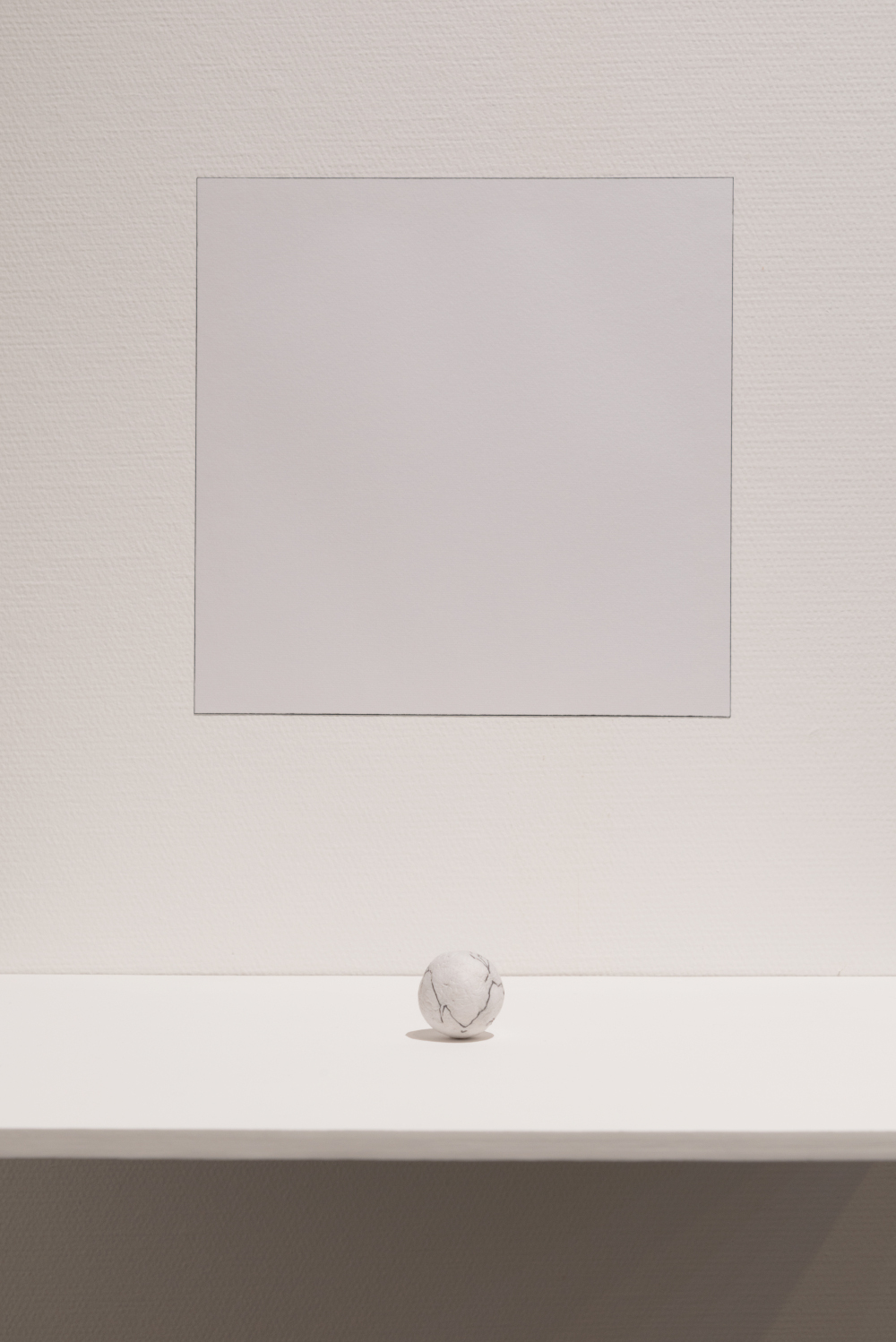
2.《パンゲア》 2017年 エッジ(厚み)をマーカーで塗った和紙 正方形:24×24cm、球:3×3×3cm 撮影:村松桂(株式会社カロワークス)、ヒロセコレクション
Pangaea, 2017, Japanese paper ( edges are painted by marker), Square: 24×24 cm Ball : 3×3×3 cm, photo by MURAMATSU Katsura (Calo works Co.Ltd), Hirose Collection
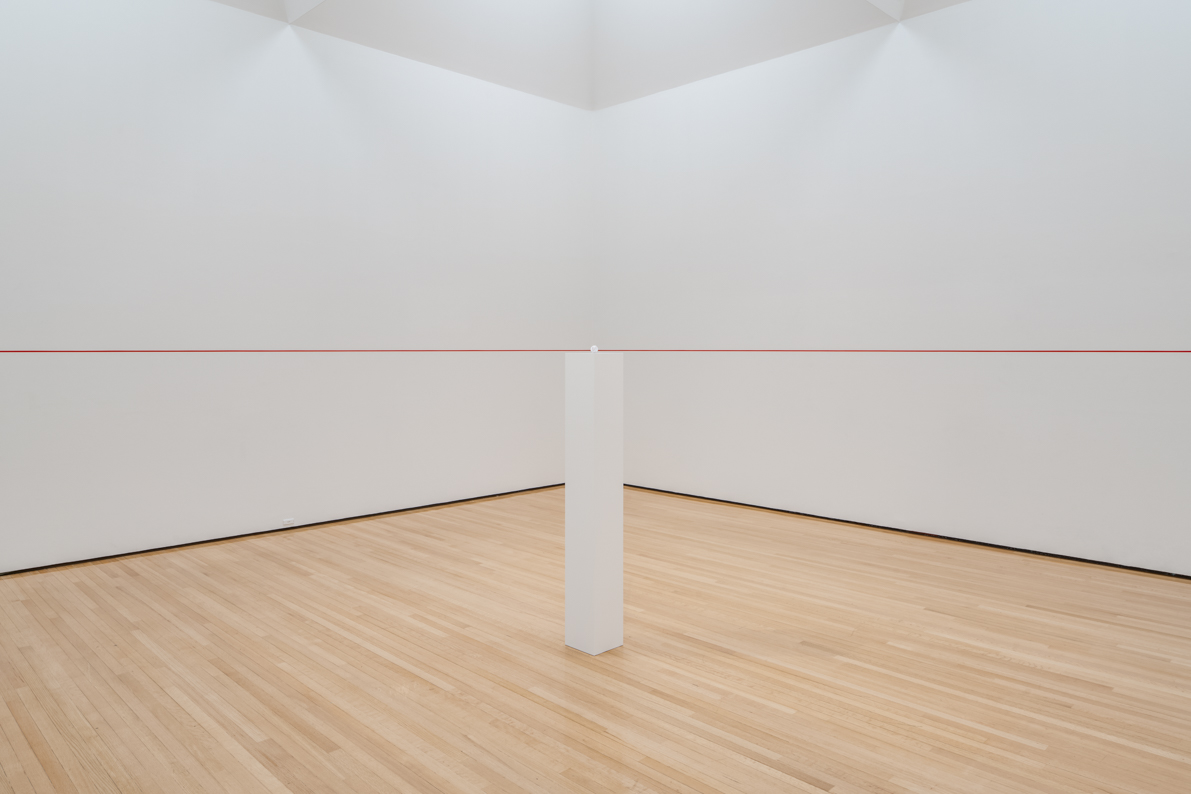
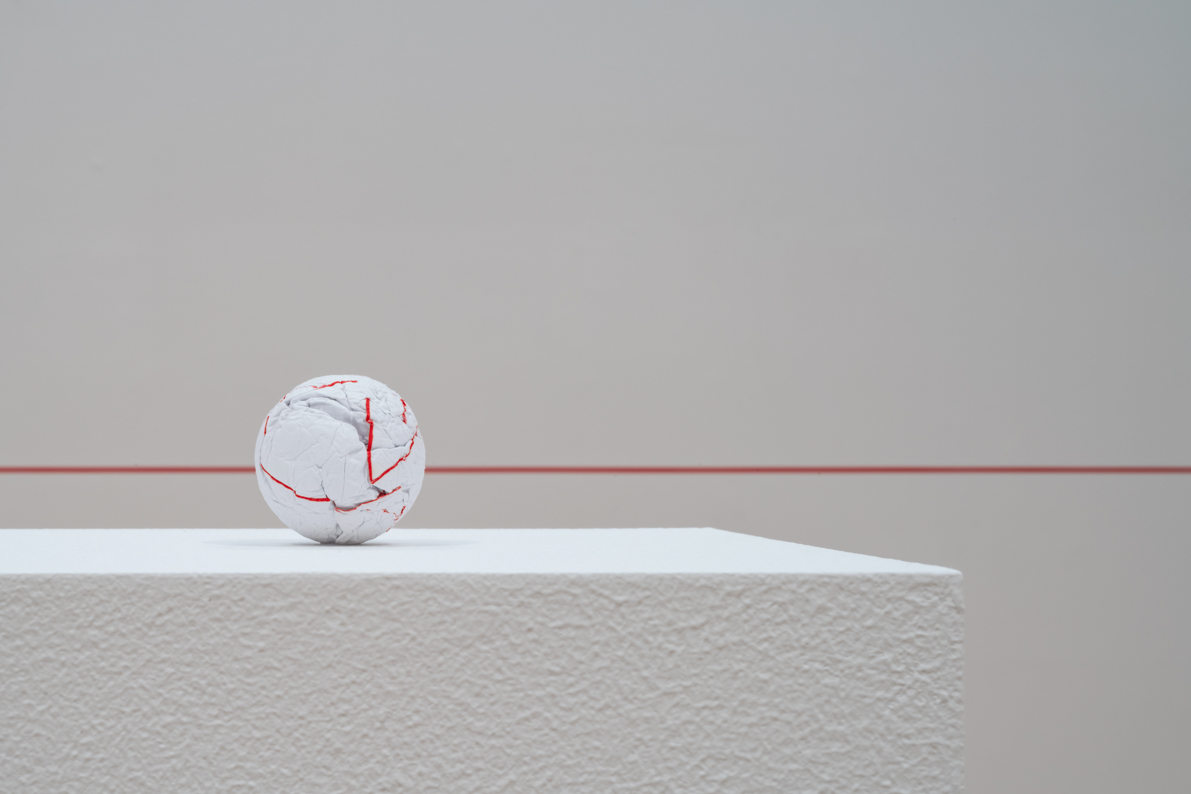
3.《パンゲア Red Square Line 》2021年 場所限定インスタレーション(豊田市美術館) 計測不能(壁の赤い線は建物を超えて伸びている)球:3×3×3cm ミクストメディア、球は和紙とアクリル絵の具、撮影:ToLoLo Studio 豊田市美術館蔵
Pangaea Red Square Line, 2021, Site specific installation at Toyota Municipal Museum of Art, unmeasurable (the red line runs beyond the building itself), Mixed media, Ball:Japanese paper, acrylic paint, size of the Ball : 3×3×3cm, photo by ToLoLo studio, Collection of the Toyota Municipal Museum of Art
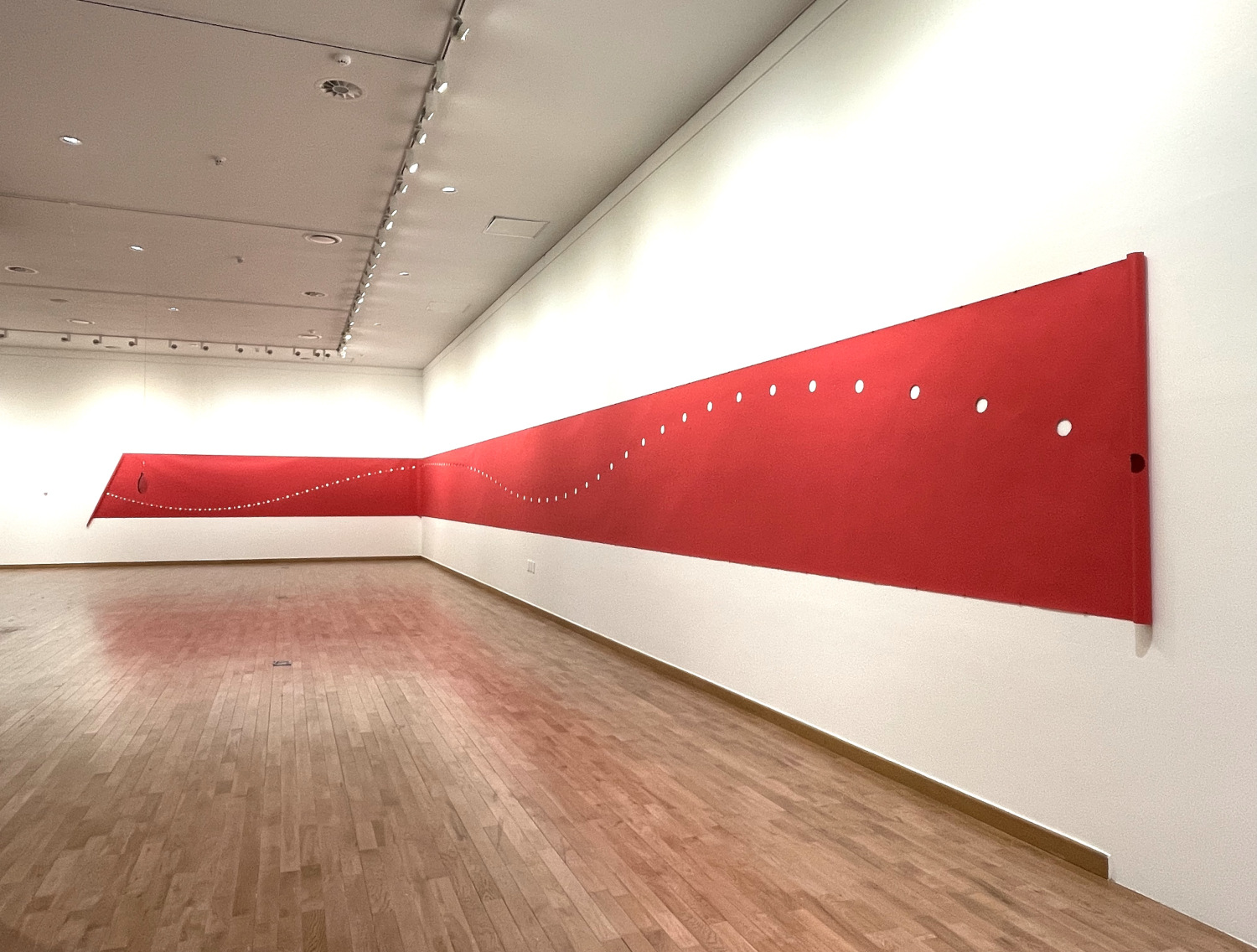
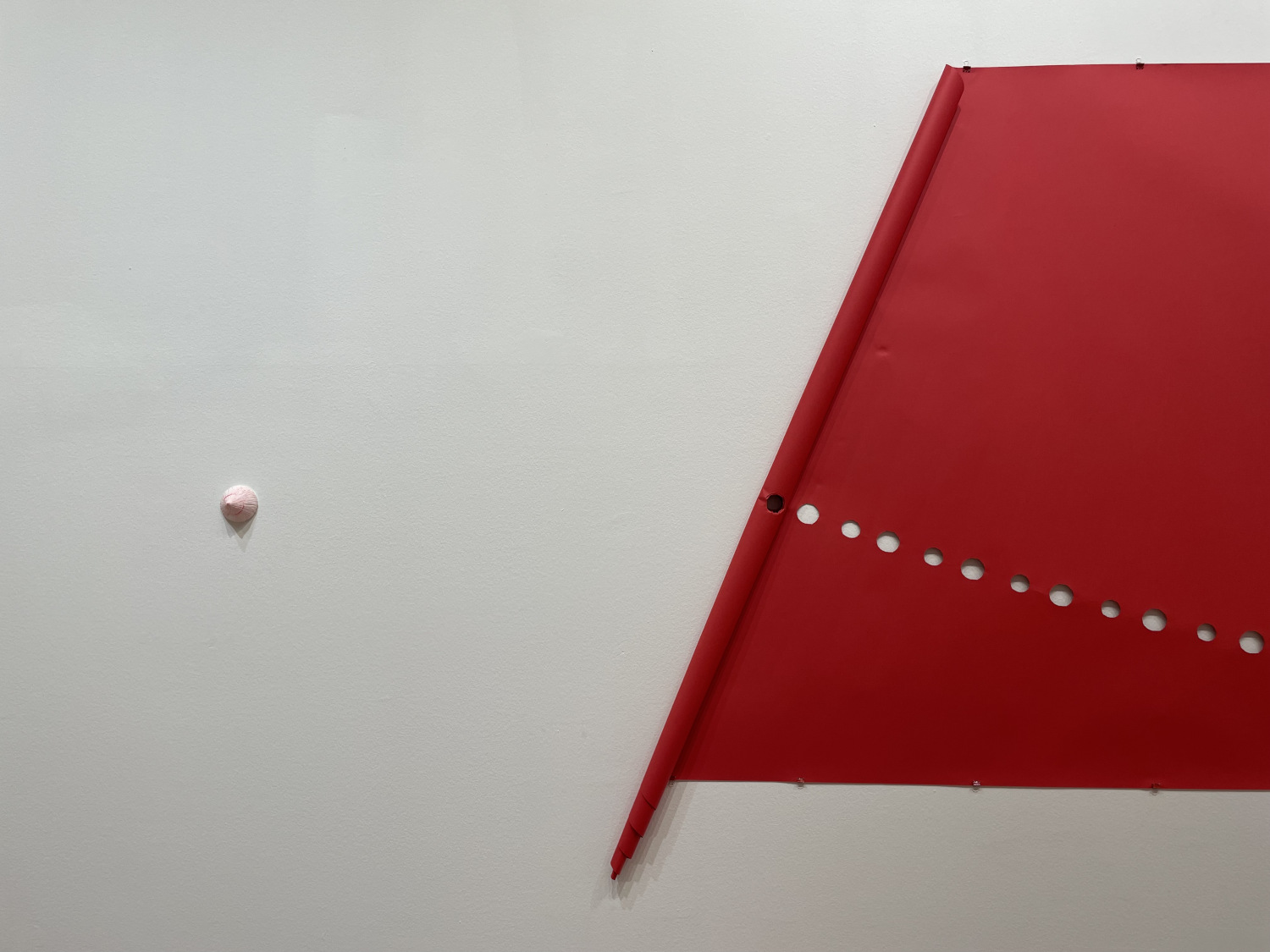
4.《一即多多即一》 2024年 インスタレーション(釜山ビエンナーレ2024) 背景紙 石膏、紙:136×2500 cm、石膏:7×7×4.6cm
One is Many Many is One, 2024 , installation at Busan Biennale 2024, Backdrop paper, Plaster, paper: 136×2500 cm, plaster:7×7×4.6cm
一即多多即一
私たちが何かを「ひとつ」と数えたときから、
世界の分裂が始まるのではないのでしょうか、
なぜなら世界は全体
で「ひとつ」だからです。
でも,私たちは「全体」を見る事はできるのでしょうか?
私たちは「ひとつ」を数える事ができるのでしょうか?
寺内曜子
One is Many Many is One
When we count something as “ ONE ”
this is the beginning of dividing the world
which in fact is One as a Whole
But, can we see whole of the universe?
Can we count ONE ?
Yoko Terauchi
一卽多 多卽一
하나 속에 전체가 있고 전체는 곧 하나다
우리가 무언가를 ‘하나’로 셈할 때
사실상 ‘전체’로서 ‘하나’인 세계를
분할하기 시작한다.
그러나 우리가 ‘우주’의 전체를 볼 수 있는가?
우리가 과연 ‘하나’를 셀 수 있는가?
요코 테라우치
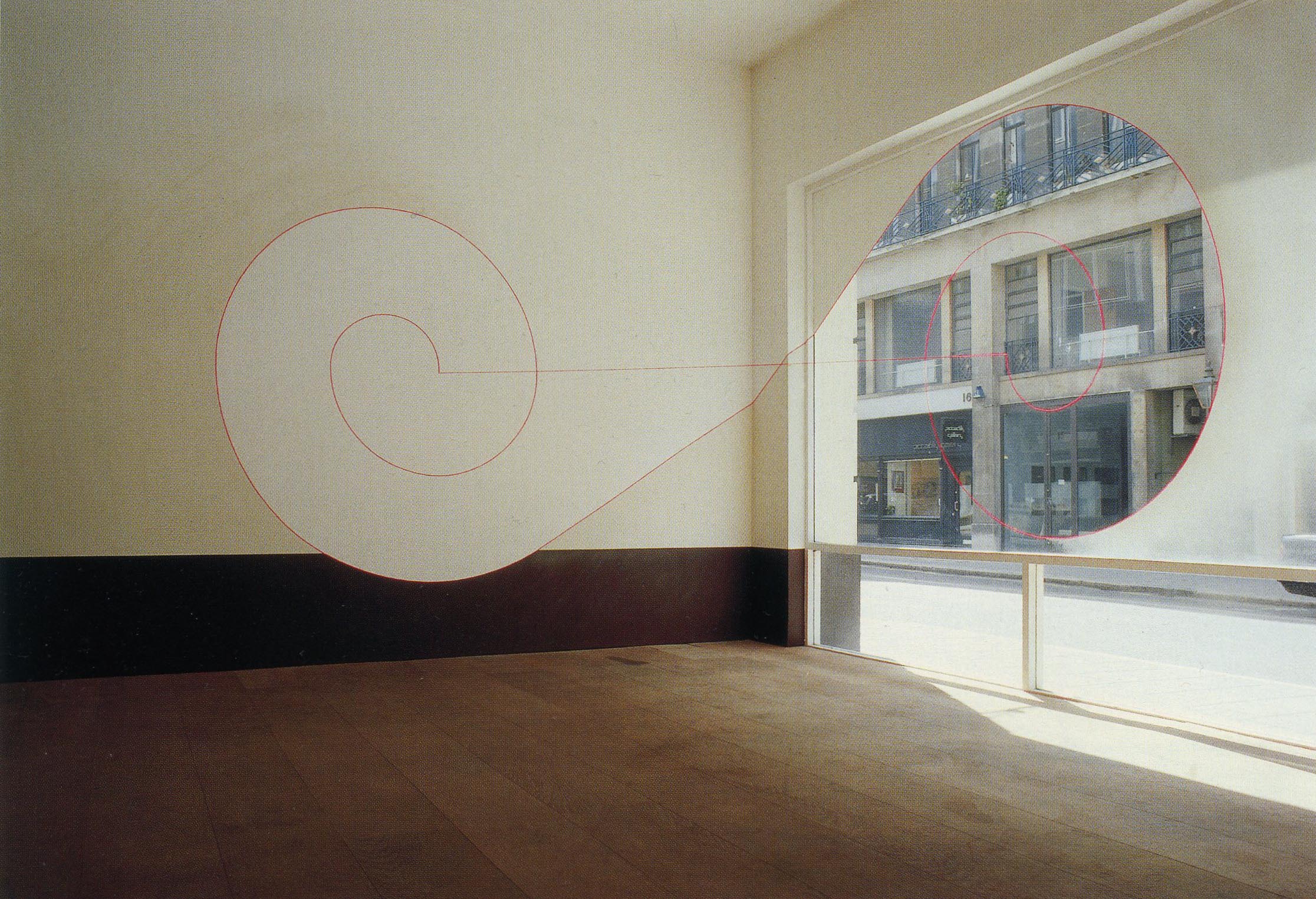
5.《混沌》1993年 場所限定インスタレーション (ヴィクトリア・ミロ、ロンドン) ミクストメディア 計測不能
Konton , 1993, Site specific installation (at Victoria Miro, London), Mixed media, Unmeasurable
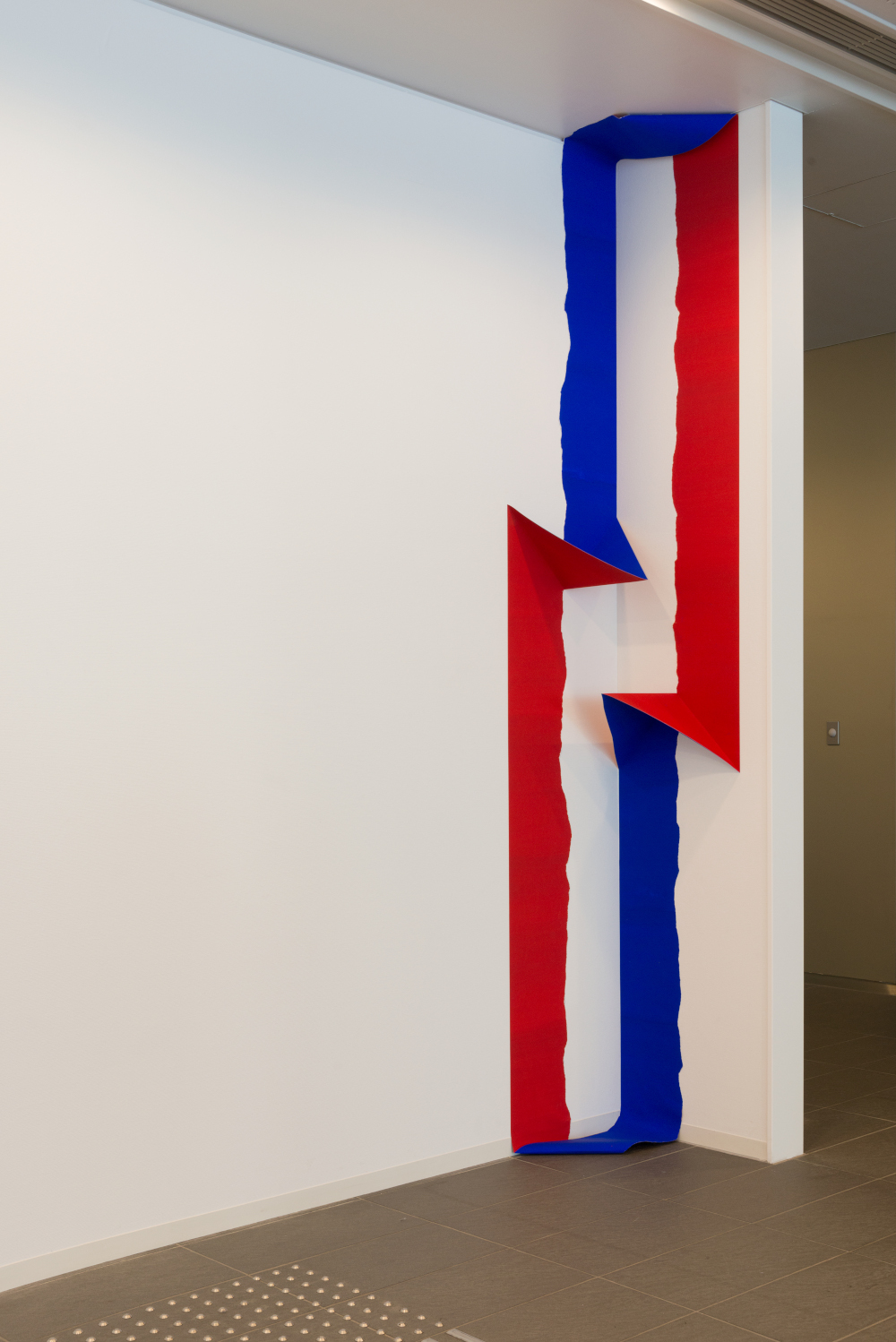
6.《ナイト・アンド・デイ》1991/2017年 インスタレーション(慶應義塾大学アート・センター)、彩色した一枚の紙 壁高により可変(319×50×50cm) 撮影:村松桂(株式会社カロワークス)
Night and Day, 1991/2017, installation at Keio University Art Center, Painted one sheet of paper, Size variable depending on wall height(319×50×50cm), Photo by MURAMATSU Katsura (Calo works Co.Ltd)
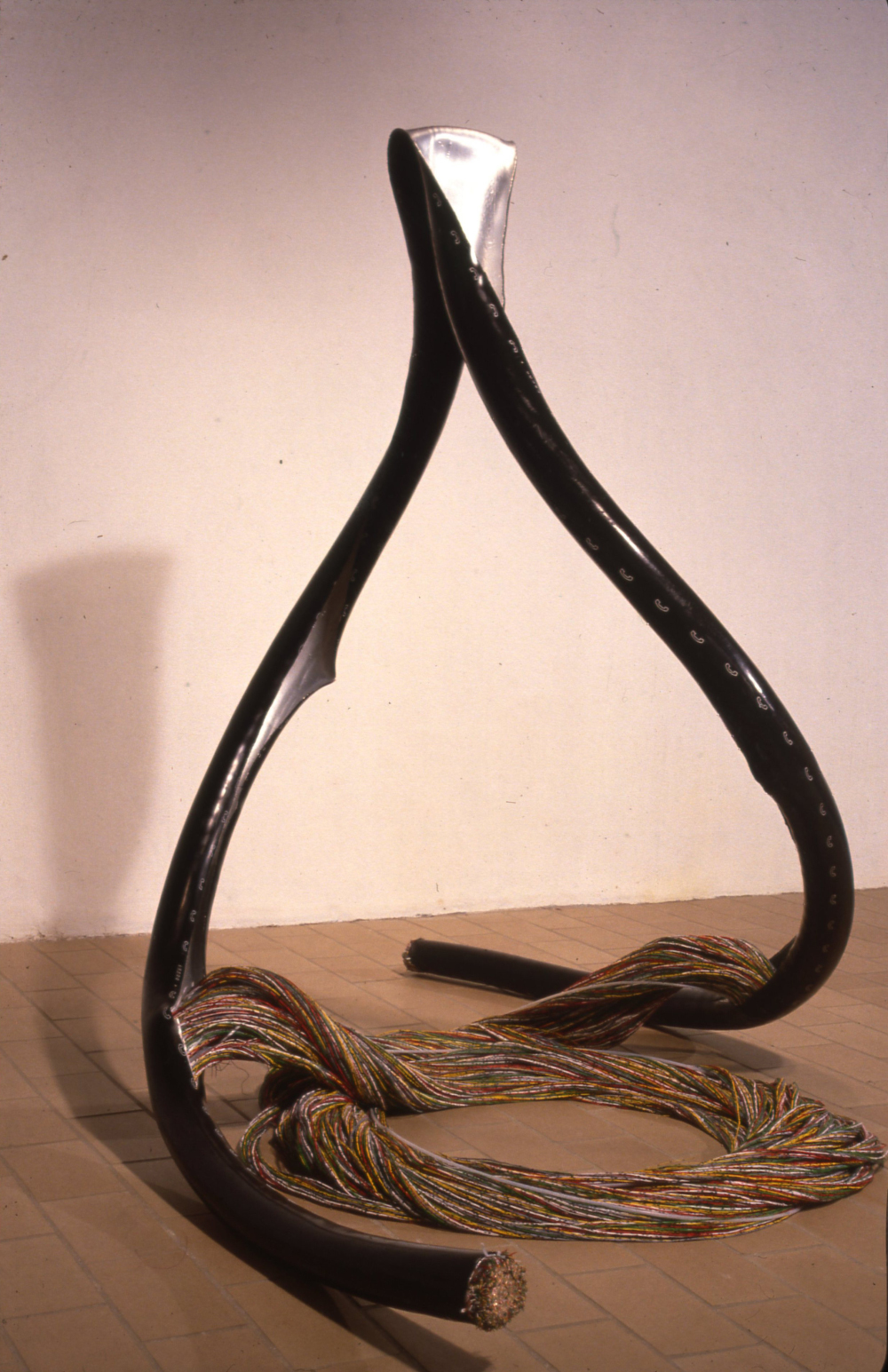
7.《ホット・ライン109》1991年 電話ケーブル 150×150×150㎝
Hot Line 109, 1991, Telephone cable, 150×150×150㎝

